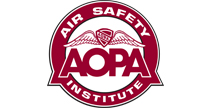Personal pressure: Weather dooms pilot anxious to get home
(ERA10LA105)
 By David Kenny
By David Kenny
Patience is an essential survival skill for pilots of light aircraft. Sometimes conditions just don’t cooperate, and it doesn’t matter how badly you need to be on your way. Long-term success—not to mention survival—requires learning that if the weather was unflyable yesterday, that same weather will still be unflyable today. This gets easier with practice, but in extreme cases even the most seasoned pilots may struggle to keep themselves on the ground until circumstances improve.
At 10:18 a.m. on Jan. 4, 2010, a Cessna 172 took off from Bangor International Airport in Maine. Thirty-six minutes later it crashed through the ice on the Penobscot River, killing the solo pilot. The airplane was bound for Goose Bay, Newfoundland, on the first leg of a transatlantic crossing, en route to eventual delivery to a buyer in Russia. Conditions were not especially favorable for a long cross-country (the pilot’s IFR flight plan estimated seven and a half hours using ferry tanks): northwest winds gusting to 17 knots and an altimeter setting of 29.35, with overcast ceilings at 2,600 feet agl and a temperature of 3 degrees Celsius. Two witnesses reported mist and light snow at the time of departure.
At 10:40 a.m., the pilot was handed off to the Boston Air Route Traffic Control Center (ARTCC) and reported climbing through 6,000 feet for his filed altitude of 9,000. A few seconds later he requested clearance to level at 7,000 feet, which was approved. Five minutes after that, the controller asked if he was in fact going to climb to 7,000 and was told the Skyhawk’s rate of climb was down to fifty feet per minute. The pilot requested clearance to level off at 6,000 to build up airspeed. He did not specifically mention icing but did add that he was “a bit heavy.” That was certainly true. He’d had the Bangor FBO fill the 124-gallon ferry tank as well as the wing tanks. This brought the airplane’s weight close to the 3,315 pounds allowed under the special airworthiness certificate issued for the ferry flight, 30 percent above the maximum authorized for an unmodified 172.
About three minutes later, the Boston controller transmitted that “it appears you’re having a hard time maintaining altitude. My minimum IFR altitude in your area is three thousand seven hundred.” The Cessna pilot replied, “… some severe turbulence here. … I’m, uh, having control difficulties.” The controller asked whether he’d like to try to return to Bangor, and contacted Bangor Approach to coordinate the emergency after the pilot agreed.
The Skyhawk made radio contact with Approach at 10:53 a.m. After reading back a clearance direct to the Bangor VOR, the pilot added that he was “in extreme turbulence with ninety over ninety-degree banks.” A minute and a half after he reported trying to maintain 2,300 feet msl, radar contact was lost; the last return showed him at 1,200 feet. The first reports of an ELT came in ten minutes later, barely three minutes before the local fire department called the tower to report the crash. Most of the airplane was found submerged, making it impossible to confirm that it had accumulated ice, but this seems the likeliest explanation for its rapid descent.
The 77-year-old commercial pilot had more than 14,000 hours of flight experience, including 9,500 in single-engine airplanes and about 2,000 in actual instrument conditions. He was highly regarded by the company hired to arrange the ferry flight, for which he had worked as a contract pilot on other occasions. When he filed his flight plan, he had told the briefer that he was aware of airmets Sierra for widespread IFR conditions, Tango for moderate turbulence below 11,000 feet, and Zulu for moderate icing below 13,000 feet, with freezing levels of 2,500 feet and below. Not only did the 172 have no icing protection, but the operating limitations accompanying the special airworthiness certificate included the direction, “Avoid moderate to severe turbulence.”
Why did he choose to launch in those conditions? The investigation turned up some hints. He had told the Flight Service briefer that he’d been “stuck for a week here.” Two witnesses at the airport recalled his telling them how anxious he was to return to Britain, where his daughter was scheduled to undergo surgery and his wife had recently had an automobile accident. The bad weather had frustrated him to the point of considering leaving the Cessna and flying home commercially. In retrospect, that seems like a better choice.
Related Links
Do the Right Thing: Decision Making for Pilots Safety Advisor
Accident Case Study: Airframe Icing online course
"Landmark Accidents: Attitude or Altitude?" Safety Pilot column
"Going, Going, Going Around" Safety Pilot column